Olympus is currently firing up consumer interest with its latest product, the OM-D E-M5. I wrote a brief preview when it was announced last week, after days of tantalising leaks and have found myself rather more interested in the camera than I first thought I would be. Today I went down to Nagoya where Olympus was holding one of its hands-on demonstrations of the new camera to get a firsthand look before it is released.
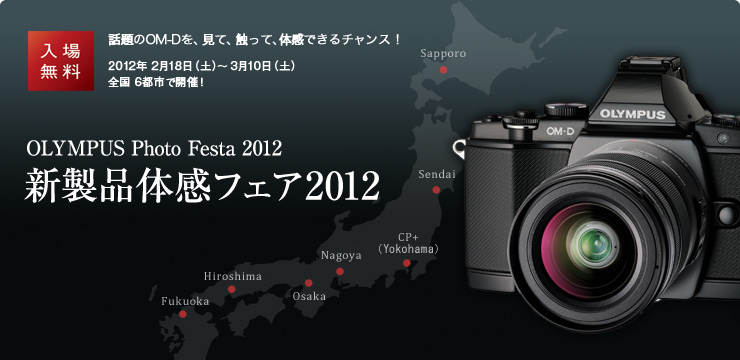
These ‘Photo Festa’ events are currently being held around Japan, beginning with the Camera and Photo Imaging Show CP+ last week. Along with the main attraction – a chance to try shooting with the upcoming OM-D E-M5 – there is also a lens corner where visitors can try some of Olympus’s greatest glass, several talks by Japanese photographers (including photographs taken with the OM-D), a free camera cleaning service and also various booths to try the existing Olympus models. You can check out the homepage here to see if Olympus is coming to a city near you. The events are free to enter, and if you bring an Olympus camera, you also receive a commemorative mobile phone strap like the one below!
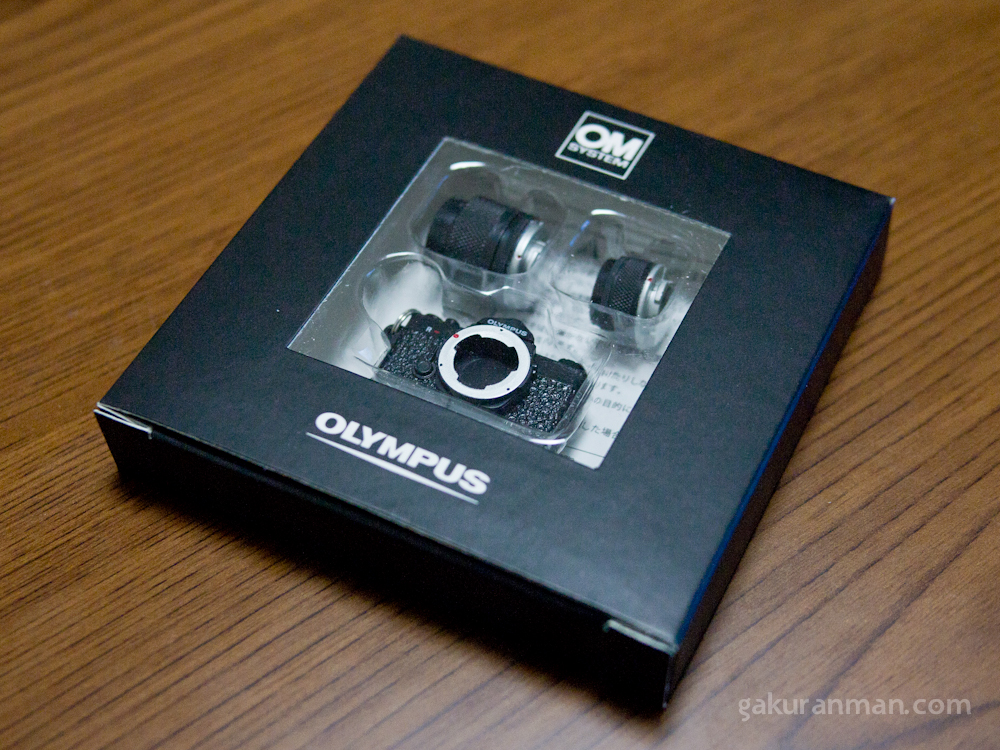
Anyway, let’s get started! I’m sure most readers will have learnt a lot about the camera already, so unfortunately I cannot bring a lot of new information to the table, but in chatting with the Japanese staff, I did pick up a few things.
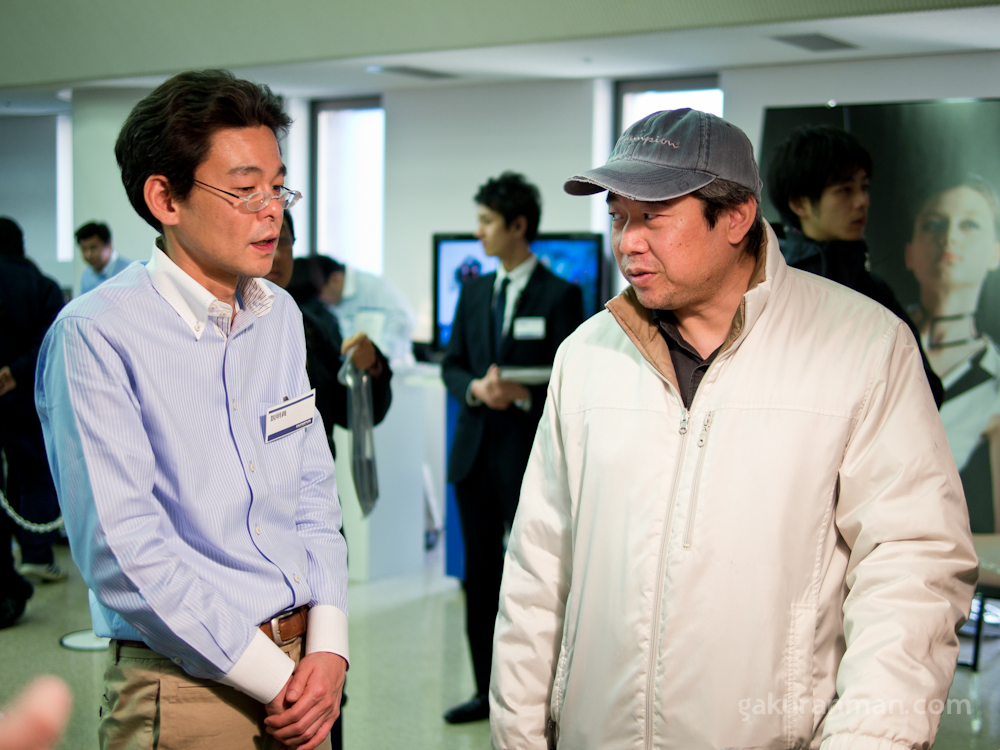
According to one of the staff, the new sensor in the OM-D is about 1 stop better than the E-P3, and 2 stops better than the E-5. That means, for example, that ISO 1600 on the E-P3 will look similar to ISO3200 on the E-M5. Of course, that information could just be his personal opinion, but judging from the reports I’m seeing online and the recent raw files I checked out that were posted, the new E-M5 sensor seems like a winner. In general the Olympus staff seemed pretty confident about being able to use higher ISOs with less noise. Many have also been wondering who has made the new sensor in the camera. I asked an employee and got the same response as everyone else – ‘it’s a secret’. Why exactly? It seems to be a business decision, judging from this posting on the ‘Get Olympus’ Facebook page:
Currently we are not disclosing the manufacturer. As with all camera components, Olympus does not disclose our partners until an agreement to do so is made by both parties.
According to the staff member I asked, it seems Olympus wants to avoid people judging the performance based on brand names or manufacturers. As he put it – asking who made the sensor is like asking who made the glass in the Olympus lenses. It’s all a bit pointless if in the end it delivers great quality.
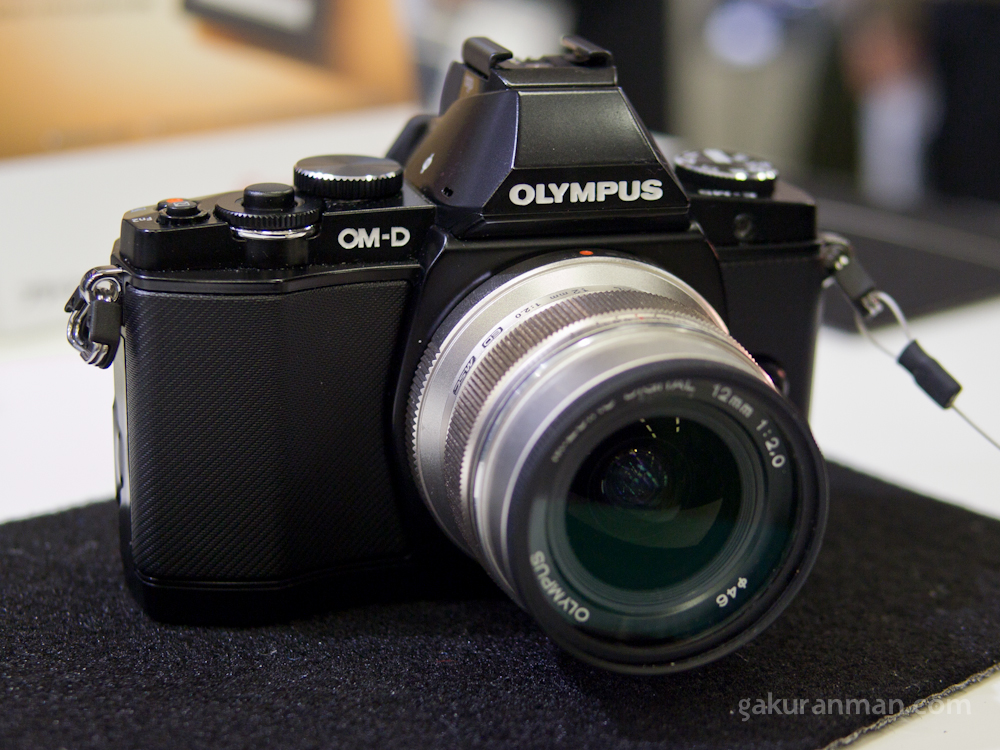
The ‘hands-on’ corner was 5 minutes per person, so I didn’t get to try everything I wanted. That said, I found the handling of the E-M5 to be rather good. The grip is closer to my E-PL2 than the E-P3 – chunky enough to hold firmly, even without the additional battery grip. The camera itself, being made of magnesium alloy, has a delightful heft and feels solidly built. I found the viewfinder bright and responsive. It was large enough to view comfortably, and the image stabilisation worked liked a dream. Hold down the shutter button halfway and the IBIS kicks in; the viewfinder suddenly stops shaking around and everything just seems to become calm, which is very useful for following subjects.

The same goes for video – panning is remarkably smooth and the horrible jellylike wobble of the E-P3 video when image stabilisation is left on is completely gone. I really wanted to try walking around with the camera to see how it handles footsteps, but the camera was locked down by a wire. It probably isn’t quite as good as a steadycam, but could be pretty close if used carefully. I can see it being a huge hit among consumers tired of wobbly videos. The 12-50 weather-sealed lens was also nice, and the macro mode very useful.
Since having seen some raws from the E-M5, I’d almost been completely sold on the camera before attending the event. But there was still one thing left undecided in my mind. Which colour!? Some may find the notion of worrying about the camera’s colour rather superficial – it’s what’s inside that counts, right? I agree, but I do also appreciate good design. Both the black and silver version of the camera are beautiful, but as many know, Olympus have released quite a few silver coloured and metal lenses, like the 12mm f/2 wide lens. In some previous pictures I’d seen, the 12mm lens looked like it had rather a different shade of silver to that of the E-M5. It looked so different in that particular picture that I really wondered if the silver body of the E-M5 would properly match the lens.
I’m very happy to report that the difference is quite subtle. I mounted my own 12mm lens on a silver E-M5 body and it looked stunning. So too did the upcoming 75mm f/1.8 lens prototype that was on display. The leather-style grip of the silver version of the camera also looks very nice, so my mind was made up today. I’ll be pre-ordering a silver version :).
Another interesting booth at the Photo Festa was the one showcasing Olympus’s underwater housings. I have a scuba diving licence myself and have always been interested in underwater photography. Last year I bought an XZ-1 and Olympus housing on my trip to Okinawa, after wondering a lot about buying a housing for my PEN E-PL2. I decided not to buy a housing for the E-PL2 because of the camera’s slow autofocus. The E-P3 has much faster autofocus, but unfortunately no underwater housing. You can imagine, then, that I was very happy to learn of a new underwater housing for the E-M5. I got to see a prototype for the new housing that Olympus is building and chat with the passionate staff at the booth.
The chap above is one of the people working on the new housing (although do note, that isn’t the new housing he is holding!). He told me a little about his work, which included going to Okinawa to photograph colour charts underwater to calibrate the white balance. Apparently Olympus do this to test every housing and camera that will be used underwater, and is the reason why Olympus generally achieve good colour results, although he very humbly stated that they still have a long way to go. He also told me how they are working hard to try and meet a summer launch in Japan for the new underwater housing, but stressed that they are still unsure if they can meet the deadline as they are still developing it.
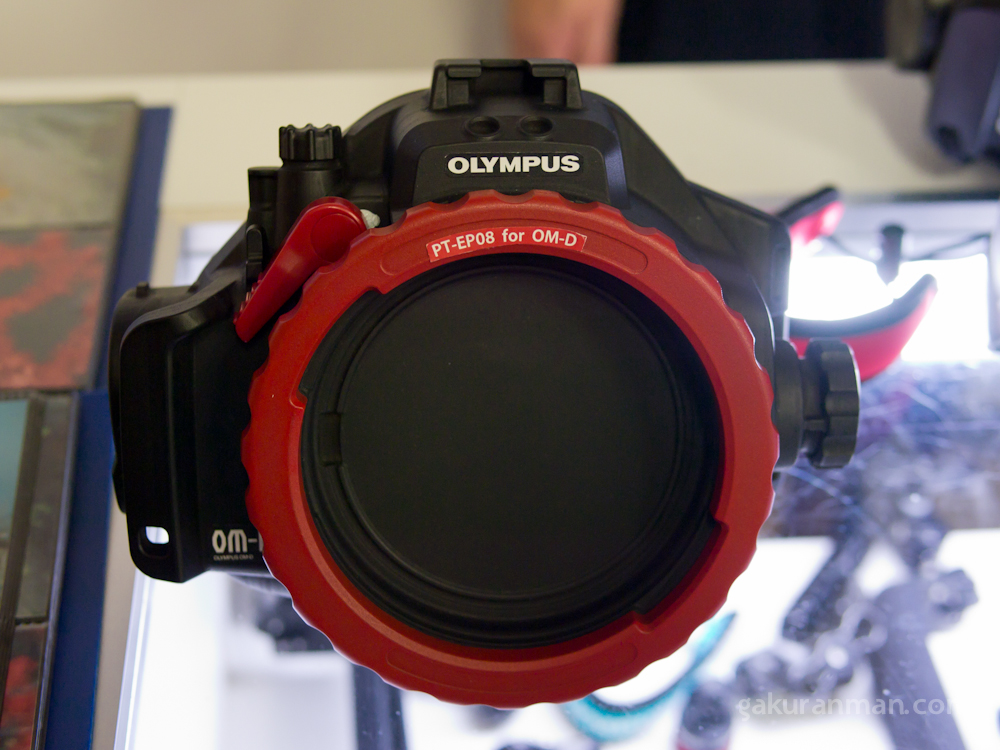
As you can see from the picture above, the current prototype does not have a fixed lens port. In fact, it’s slightly different to the picture I previously found. It was made clear to me that the final version of the housing has not yet been officially decided. I’m certainly hoping that we see a housing with removable lens ports because it will open up the possibility for 3rd-part lens ports and future-proof the housing as new lenses become available.
That’s about all of the information I gleaned from the event. The atmosphere was very relaxed and professional, and the Olympus staff cheerful and happy to help. As much as this is a PR event designed to help sell their products, I’ve heard good things about Olympus’s customer service before, and the approach they take towards the public as in the event today has been a positive experience. After all the scandals and problems the company has been having recently, it’s good to see the camera division still strong and aiming to be innovative.
To round up then, here’s a last little omake. The Olympus girl pictured above was working on the camera booths was helping visitors to try new cameras and explaining the different features. I was rather impressed with the camera she held. Apparently it is her custom-made lens cap, which included a cute little frog.
Not quite as cool as the PEN ‘f’ logo, but a nice idea. Anyone interested in making a niche startup that specialises in custom lens caps? I reckon it could be popular with girls, at least here in Japan where they enjoy decorating their electronic accessories :).









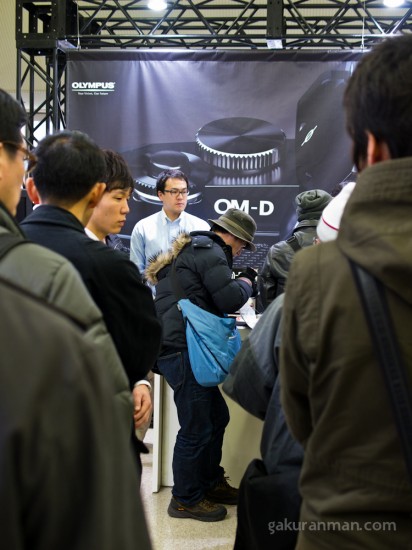
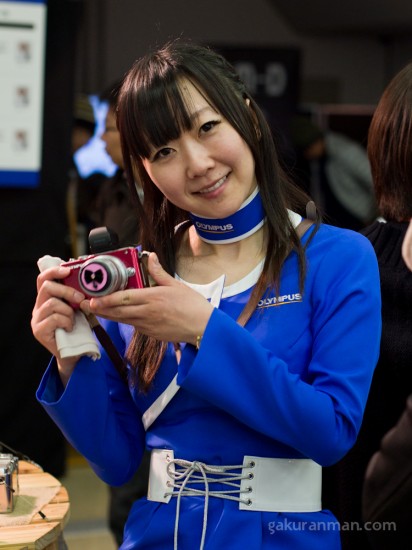
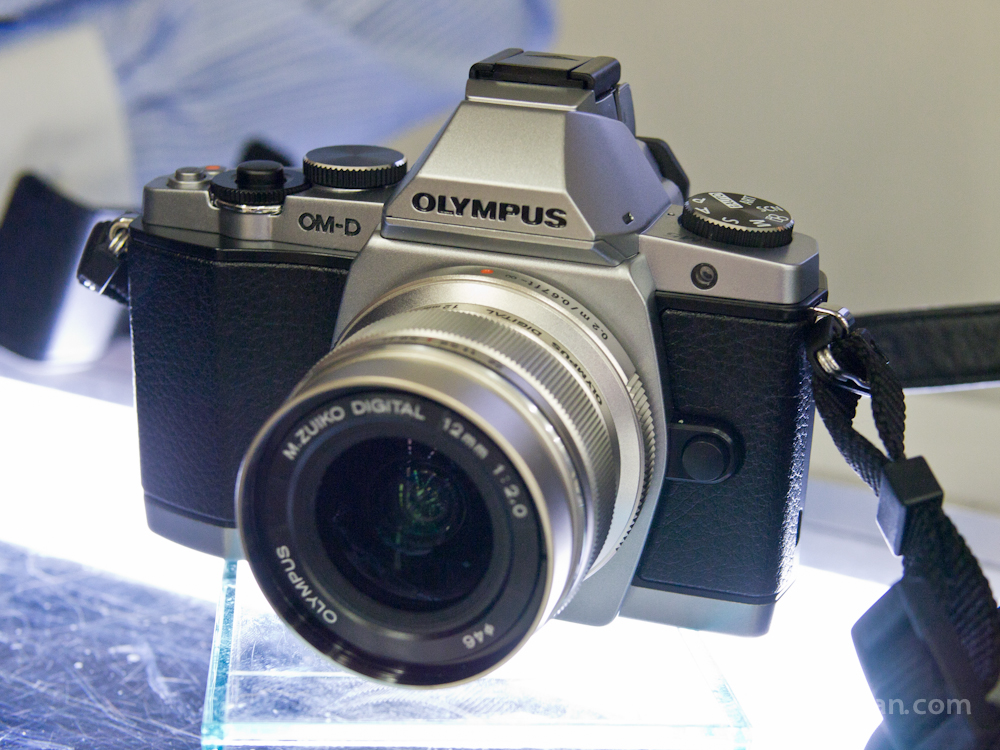
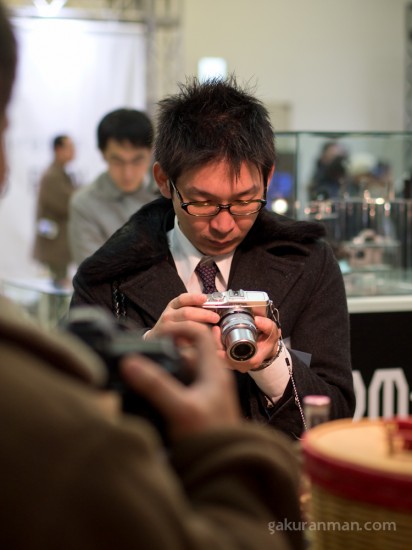
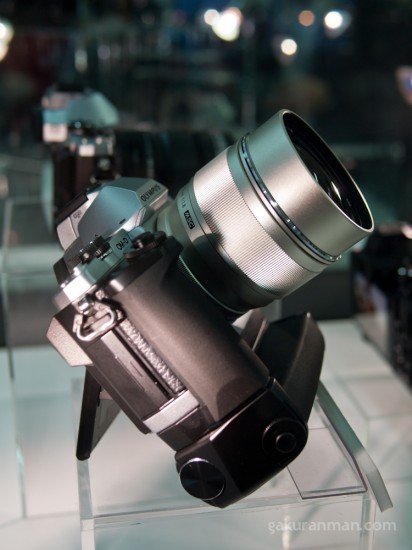
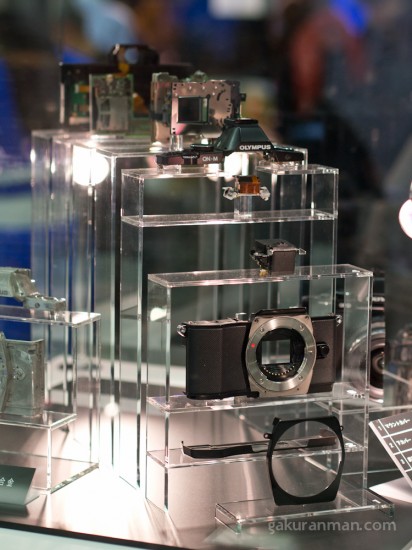
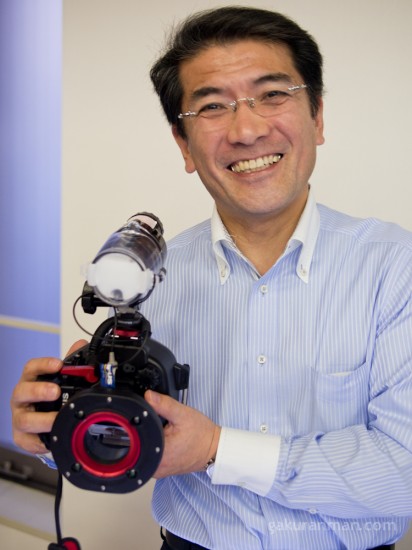
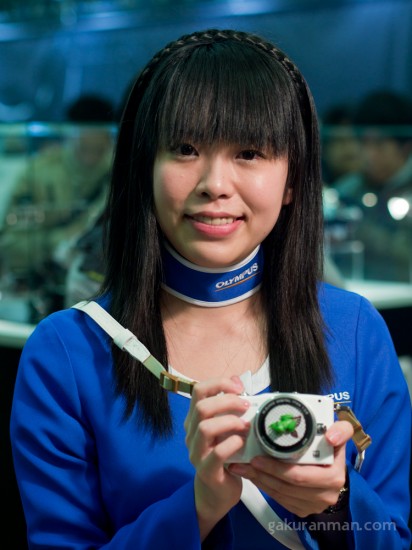
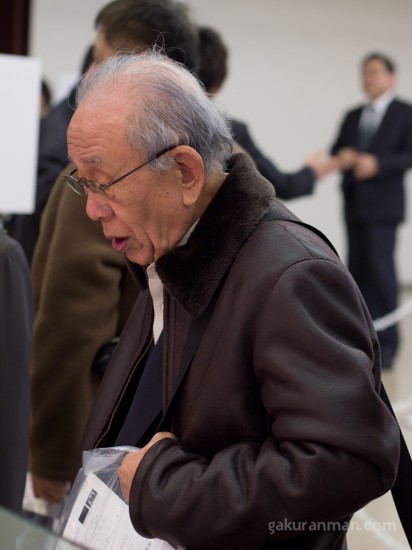
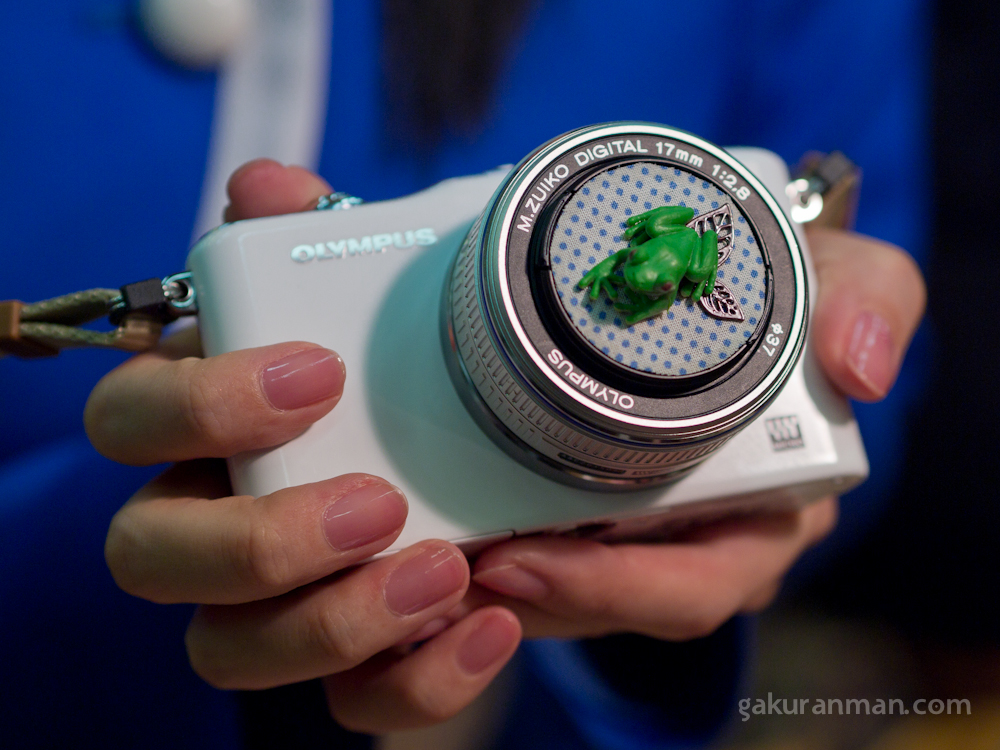
2 comments on “Olympus Photo Festa 2012 Nagoya”